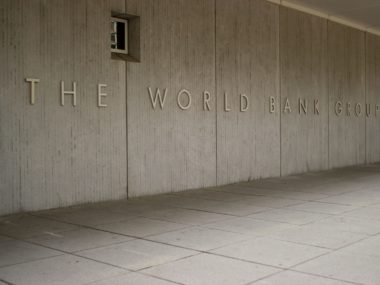Guest post by María José Méndez
This post is part of a series on illicit economies, organized crime, and extra-legal actors and came out of an IGCC-sponsored conference hosted in October 2022 by the Center for U.S.-Mexican Studies at UC San Diego’s School of Global Policy and Strategy.
In 2019, a 19-year-old woman detonated a grenade on a public bus in an extortion attempt in Guatemala City. Three years later, another woman was arrested for trying to smuggle ammunition and cell phones into a maximum-security prison in Honduras.
Accounts of criminal violence tend to portray women as passive victims. There are good reasons for this. Women are abused daily by criminal groups, especially in Latin America, where they are being killed at record rates. In Central America, women are victimized by gangs when they refuse sexual advances or protect their children from recruitment. In Mexico, they are forced into sex work by drug cartels, and their mutilated bodies are displayed to send messages to rival groups and the state.
Considering this rampant victimization, how important is the role that women play in criminal violence and what drives their participation? My research delves into this question by studying women affiliated with MS-13 and Barrio 18 in Honduras, Guatemala, and El Salvador.
While women have long played an active role in armed conflict, comprising as much as 30 percent of militant movements worldwide, the discussion around women’s involvement in violence tends to ignore contexts of organized crime and why women choose to stay in violent organizations.
In Central America, women are increasingly taking on lethal activities within gangs. This trend is also evident in other countries where women’s engagement in violent crime is also growing and diversifying. In Mexico and Colombia, where the number of female prisoners has more than doubled in the past decade, women have assumed prominent positions in drug trafficking organizations, with some even serving as leaders of their own criminal enterprises.
Several of the women I spoke with participated in hired killings and attacks against local business owners unable or unwilling to pay extortions. One former gang member said she felt “stronger than men” when given these missions; another spoke about regaining a sense of control, which had been shattered by a traumatic experience of rape. For both, participation in violence was a way of asserting power and earning respect from fellow gang members. For others, it was simply a way of surviving. As one put it to me, “In Honduras [t]here are no jobs for us […] But you must work to survive. We survive from contract killings, extortions, drug sales and kidnappings.”
Women’s contributions to violence also manifest in indirect ways, as revealed in a series of 2018 confiscated letters. In these letters, an imprisoned Honduran gang leader asks his wife to serve as a communication bridge with those outside, and to fulfill his daily needs. Requests for logistical support intermingled with demands for basic items, such as boxers and bars of soap, and reminders to give him and his children physical and emotional warmth.
As with armed conflict, criminal violence is made possible by a gender-based division of labor, where women bear the brunt of logistical and caregiving tasks. Most of these activities revolve around Central American prisons, which have become important nodes of decision-making for extortion schemes.
In a context of “mano dura” policies of mass incarceration and state persecution, which have imposed heavy constraints on gang members’ movements since the early 2000s, women have become pivotal in maintaining the complex operations that coordinate between gang members. The women I spoke with acted as the “eyes and hands” of imprisoned gang members, providing support in the transportation of weapons, transmission of messages, record-keeping, and intelligence gathering.
Some of these activities provided unexpected windows for enhancing their entrepreneurial and leadership skills. For instance, one woman who worked for her husband, a Salvadoran gang leader, spoke about how she leveraged this activity to offer paid courier services for other gang members on her own initiative. This allowed her to better support her children and ailing mother.
Gang-affiliated women also supply the basic services and goods—food, clothing, emotional support, childcare, and so on—necessary to sustain gang members and therefore their capacity to engage in the work of violence. One former gang member, for example, related how she was able to commit fully to the gang’s illicit activities because her aunt cared for her one-year-old son.
Women’s role in criminal violence is more important than we often realize. To acknowledge this role, we need to challenge traditional gender stereotypes that reduce criminal violence to a male phenomenon. We also need to challenge a prevalent assumption in research on women and organized violence: that women’s participation in lethal activities is simply the result of male manipulation or submission to patriarchal authority. This means paying attention to how women are also driven by their own aspirations for status and well-being.
Recognizing women’s complex agency in criminal violence, including the different labors they perform and the gendered factors shaping their involvement, is essential for helping address the unprecedented levels of criminal lethality affecting regions like Latin America. As scholars have argued, a clear understanding of the full range of women’s participation in violence can yield effective policy that gives women access to peace initiatives.
María José Méndez is an assistant professor in the Political Science department at the University of Toronto.






